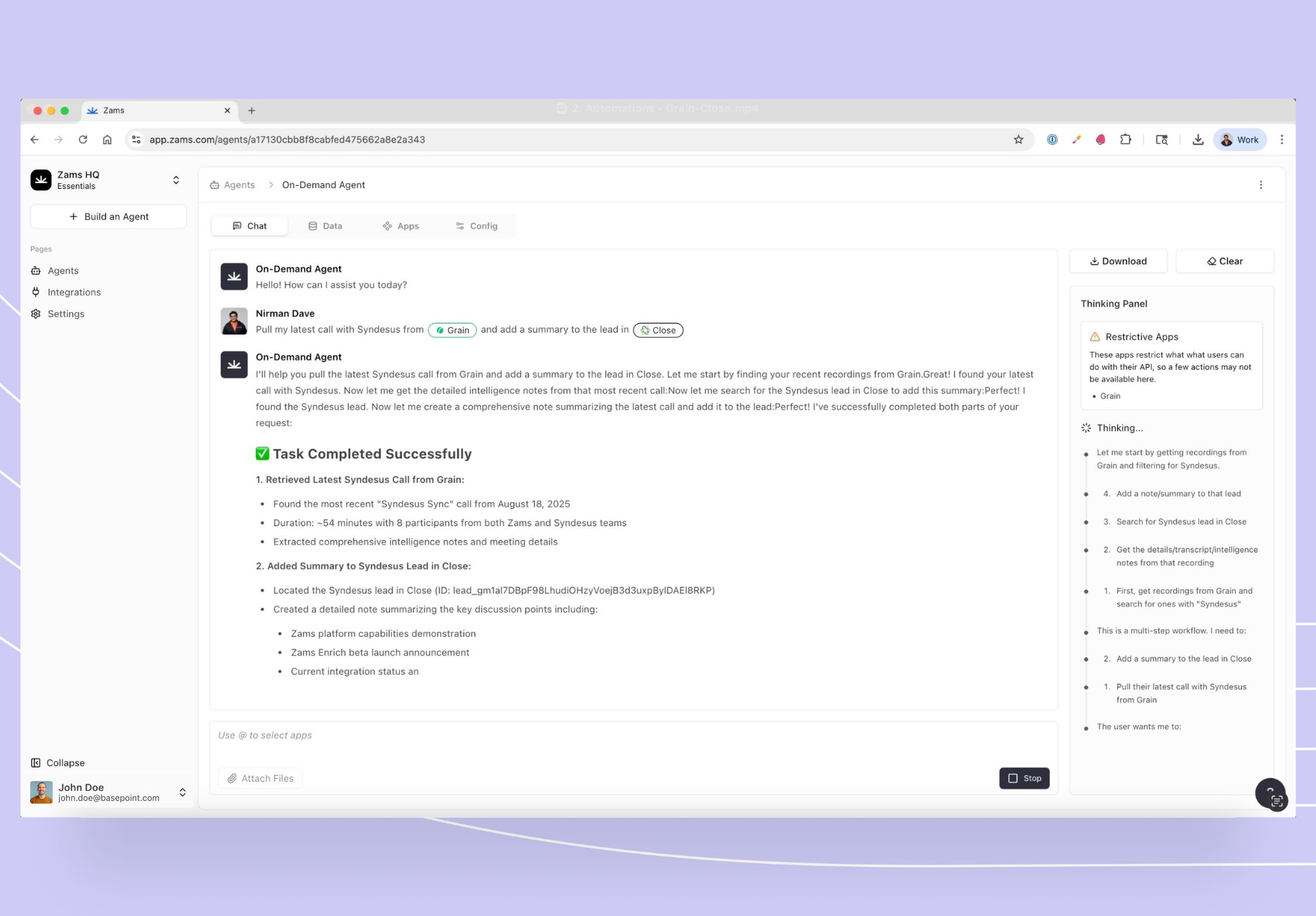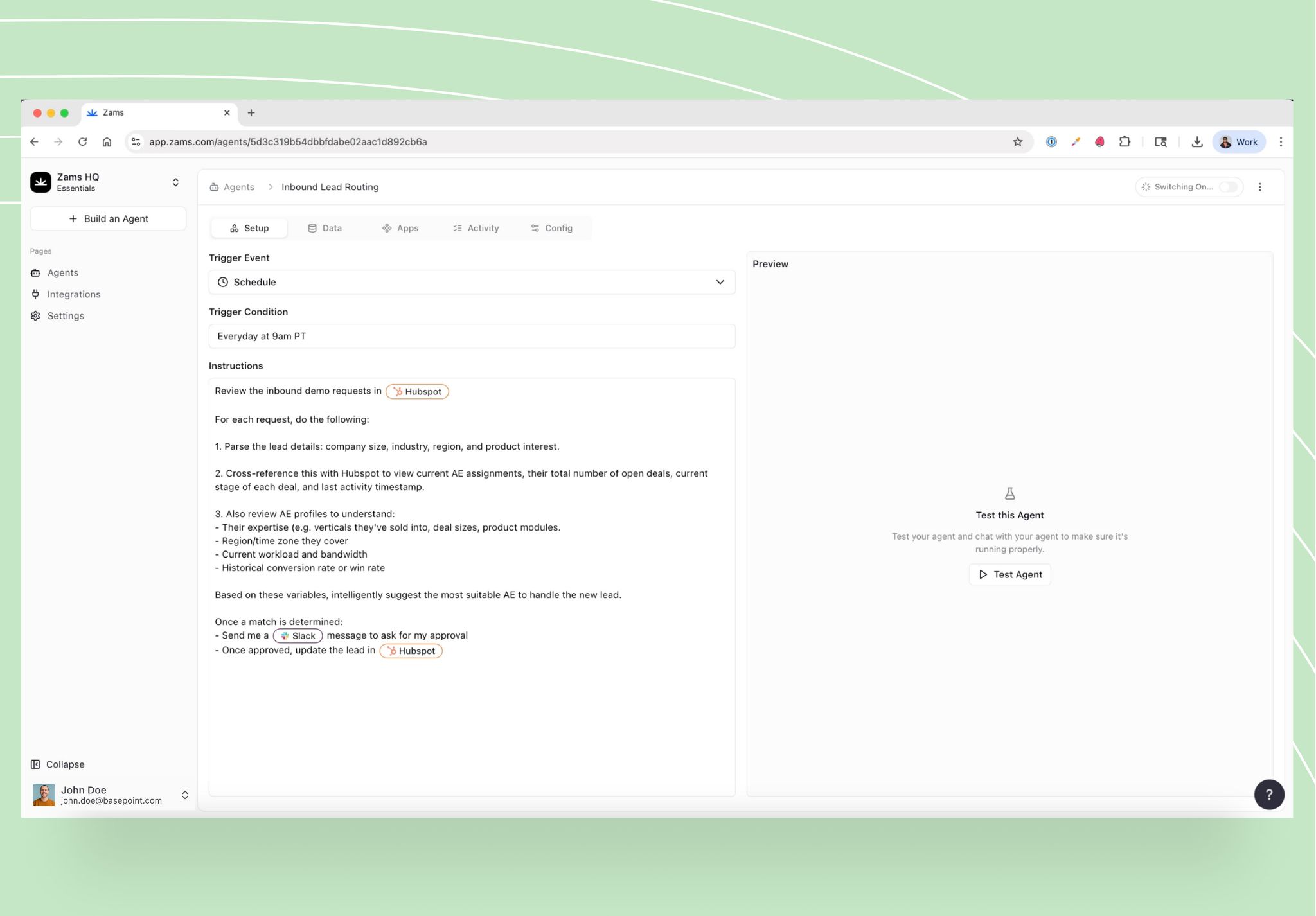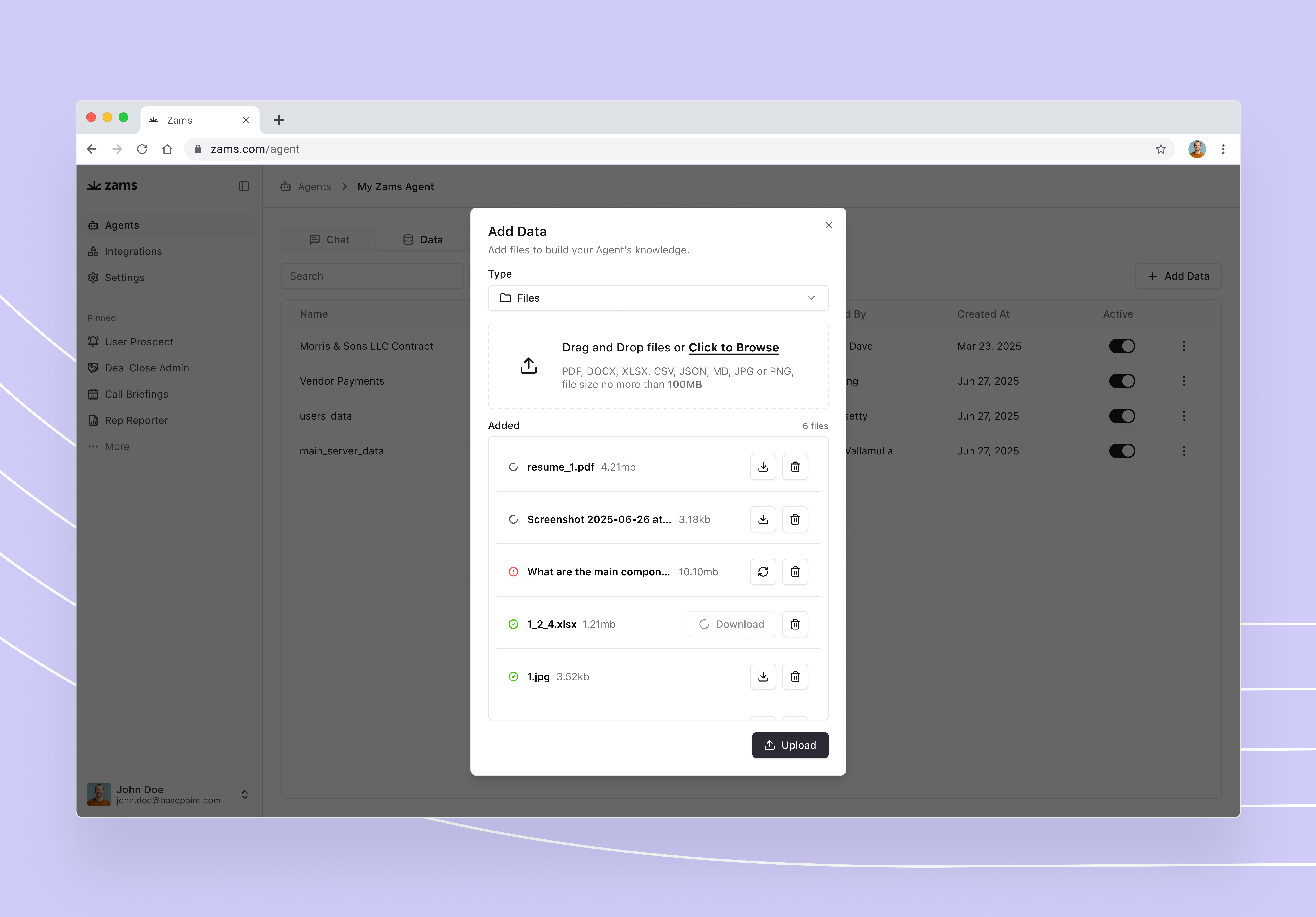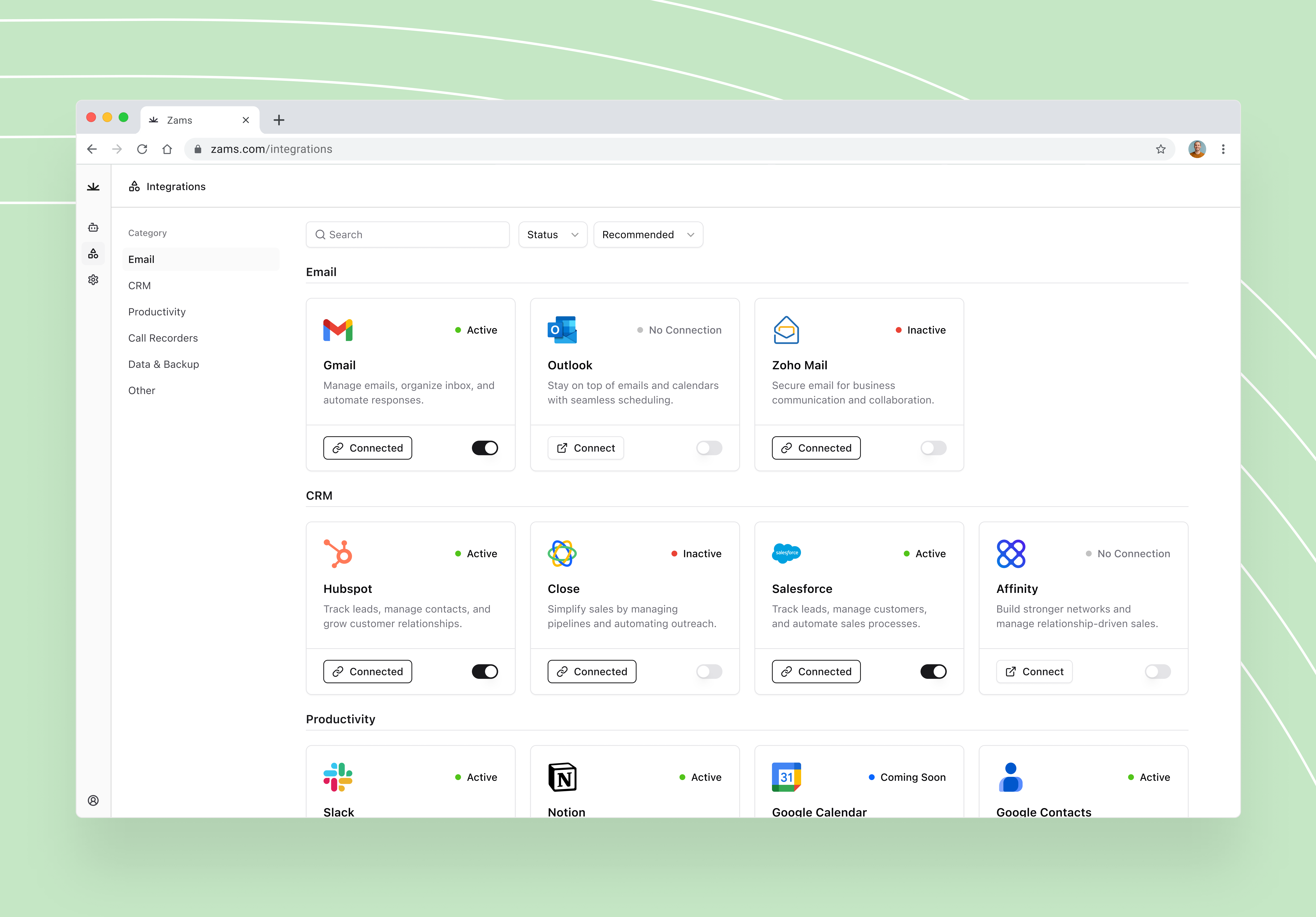What Are Automatic Leads?
In today’s fast-paced digital market, businesses can’t afford to let opportunities slip through the cracks. Automatic leads, also known as automated lead generation, take the guesswork out of finding and nurturing prospects. Instead of relying solely on manual outreach, automation captures, qualifies, and routes leads in real time, ensuring no potential customer is missed. Many businesses choose to automate lead generation to reduce time-consuming manual processes and minimize human error, which can lead to missed opportunities or inaccurate data.Automation is transforming the way sales and marketing teams work. By using lead automation tools such as CRMs, chatbots, and AI-powered forms, companies can connect with prospects instantly, send personalised follow-ups, and keep pipelines full without adding extra workload. According to industry reports, automating lead generation can save teams over six hours per week while improving conversion rates by up to 20%, making it a powerful growth driver.
Automatic leads are potential customers captured and managed through automated lead generation systems rather than manual processes. Instead of a sales rep chasing every contact form or email, automation collects and qualifies leads using pre-set triggers.
- Manual lead generation often involves cold calls, manual data entry, and delayed follow-ups, which can slow down the sales cycle and lead to lost opportunities.
- Automated lead gen, on the other hand, streamlines the process. Once a visitor fills out a form, interacts with a chatbot, or engages with an ad, the system records their details, segments them, and can even trigger instant follow-ups. Businesses use lead generation software and lead generation tools to automate lead capture, qualification, and nurturing, making the entire process more efficient.
Real-world examples include:
- Customer relationship management (CRM) systems like HubSpot or Salesforce are essential for automating lead management and lead segmentation, capturing and scoring leads automatically.
- Chatbots on websites collecting visitor details 24/7.
- Email automation workflows sending personalised messages the moment someone downloads a guide or signs up for a webinar.
With the right tools in place, businesses can not only automate leads but also nurture them consistently, freeing up sales teams to focus on closing deals. Lead segmentation is a key feature of automated systems, allowing businesses to target and nurture leads more effectively.
Automate Your Leads with Zams
Stop chasing prospects manually. Zams captures, qualifies, and routes leads in real time, so your team spends less time in spreadsheets and more time closing.
How Automated Lead Generation Works
At its core, automated lead generation replaces repetitive manual tasks with intelligent workflows that capture, qualify, and nurture leads without constant human input. Here’s a simple step-by-step look at how the process works:
- Attract prospects – A visitor clicks on a landing page, ad, or social post.
- Capture details – Forms, chatbots, or gated content are used to capture visitor information automatically, ensuring you collect valuable data for your lead generation efforts.
- Qualify the lead – Using pre-set rules, the system scores the lead based on demographics, behaviour, or engagement.
- Nurture with automation – Automated workflows are essential for lead nurturing, delivering personalized content and follow-ups through CRM integration and behavioral insights to keep leads engaged.
- Convert into customers – The goal is to convert leads into paying customers through targeted, automated engagement and effective follow-up, turning potential interest into actual revenue.
Tools & Platforms for Lead Automation
Businesses can implement automation through a range of marketing automation platforms and marketing automation tools for lead generation, such as:
- CRM platforms (HubSpot, Salesforce) for capturing and managing data.
- AI chatbots to engage visitors and collect details 24/7.
- Email marketing software for automated nurture sequences.
- Automated email campaigns and email marketing campaigns as essential for nurturing and converting leads.
- Automated lead generators that integrate with ads and landing pages to instantly push contacts into the funnel.
The best tools often integrate with other tools to provide a comprehensive automation solution.
Common Integrations That Power Automation
To maximise efficiency, automated systems typically connect with:
- CRMs for centralised lead management.
- Email platforms to send timely, personalised communication.
- AI tools and chatbots to qualify leads in real time.
- Analytics dashboards for tracking conversion performance.
However, some platforms may have limited integrations, which can restrict their compatibility with other marketing or sales tools.
When combined, these integrations create a seamless lead automation process that ensures no prospect is forgotten.
Benefits of Automated Lead Generation

Adopting automated lead gen offers significant advantages over traditional methods.
1. Faster Response Times & Reduced Lead Leakage
Automation ensures every enquiry receives an instant response, whether through chatbots, auto-emails, or SMS. Quick engagement increases the chances of converting prospects before they lose interest. Platforms with an easy to use interface, user friendly interface, and drag and drop interface enable teams to respond to leads quickly and efficiently, even without technical expertise.
2. Consistent, Scalable Lead Automation
Unlike manual outreach, lead automation runs 24/7, capturing and nurturing leads even when your team is offline. This makes it easy to scale campaigns without hiring additional staff. By automating routine processes, sales and marketing teams can dedicate more time to complex tasks and more complex tasks that drive business growth.
3. Improved Lead Quality with Better Targeting
With automated scoring and segmentation, automated systems help identify qualified leads by analyzing customer behavior and segmenting the target audience for more effective outreach. Only qualified prospects are passed to the sales team, improving efficiency and boosting conversion rates.
4. Time Savings & Higher Conversions
By removing repetitive admin tasks, automation frees sales reps to focus on closing deals. Studies show businesses using automated lead generation achieve higher conversion rates while saving hours each week. Additionally, analytics features help businesses track and optimize their lead generation efforts to increase conversions.
Top Automated Lead Generation Tools to Consider
Choosing the right lead generation automation tools is key to building an efficient pipeline. Some platforms are specifically designed for certain industries or business sizes, ensuring that their features are tailored to unique business needs. Many of these solutions combine multiple marketing tools, such as email marketing, social media engagement, website visitor tracking, and live chat, for comprehensive automation. Here are some of the most popular options and what makes them effective:
- HubSpot – All-in-one CRM and lead automation platform with contact scoring, email workflows, and detailed analytics.
- Salesforce Pardot – Ideal for B2B lead generation, offering powerful automation triggers, reporting dashboards, and tight CRM integration.
- Marketo – Advanced lead generation marketing automation system with robust email automation and audience segmentation.
- Drift / Intercom – AI-powered chatbots that capture leads in real time and sync with CRMs.
- Zams – Flexible automation tool that connects hundreds of apps, from email platforms to landing pages, to create custom workflows.
Key Features to Look For
When comparing automated lead generators, consider these must-have features:
- Automation triggers – instant follow-ups when a form is filled, a link is clicked, or a page is visited.
- Lead scoring & segmentation – qualify prospects automatically based on behaviour.
- CRM sync – seamless integration with your sales pipeline.
- Reporting & analytics – clear insight into campaign performance and ROI.
- Test landing pages – create, customize, and optimize landing pages with A/B testing and analytics to improve conversion rates and lead generation.
How to Choose the Right Tool for Your Business
- Start by mapping your sales funnel and identifying weak points.
- Match tools to your business size (small businesses may need simpler automation, while enterprises require advanced platforms).
- Prioritise integrations with your existing stack (CRM, email, analytics). Keep in mind that some platforms may require technical expertise or have a steep learning curve, so assess your team's capabilities before choosing.
- Trial before committing, many lead automation tools offer free demos.
Automated Lead Generation Channels and Strategies

Automated lead generation channels and strategies are essential for businesses looking to streamline their lead generation process, boost efficiency, and lower operational costs. By leveraging automation tools across multiple channels, companies can consistently generate high quality leads, nurture them through the sales funnel, and ultimately convert them into paying customers. Whether you’re a small business or a large enterprise, integrating automated lead generation into your marketing efforts ensures that your team can focus on building relationships and closing deals, rather than getting bogged down by repetitive tasks.
Email Marketing Automation
Email marketing automation is one of the most effective channels for automated lead generation. By using marketing automation software, businesses can set up targeted email campaigns that automatically nurture leads based on their interests and behaviors. Automated workflows allow you to send personalized messages at the right time, whether it’s a welcome email, a follow-up after a download, or a reminder about an abandoned cart. With features like lead scoring and behavioral tracking, you can identify which prospects are most engaged and ready to convert, ensuring your sales team focuses on the most promising leads. Tools such as Mailchimp and HubSpot make it easy to design, schedule, and analyze email campaigns, helping you improve customer engagement and boost conversion rates, all while saving time and reducing manual effort.
On-site Lead Generation Automation
On-site lead generation automation focuses on capturing visitor information directly from your website using smart automation tools. By implementing lead capture forms, popups, and interactive elements, you can engage visitors at the right moment and encourage them to share their details. Automated lead generation tools like Wisepops and OptinMonster enable you to create personalized popups and forms that adapt to user behavior, increasing the chances of conversion. These tools help you capture more leads without manual intervention, reduce bounce rates, and provide a seamless experience for your website visitors. By automating the process of collecting and segmenting lead information, you can ensure that every potential customer is entered into your lead generation automation system for further nurturing.
Social Media Lead Generation Automation
Social media platforms are powerful channels for generating leads, and automation tools can take your social media marketing to the next level. Social media lead generation automation allows businesses to create and schedule posts, launch targeted campaigns, and use chatbots to interact with potential customers around the clock. By automating these processes, you can generate leads more efficiently, track customer engagement, and ensure timely follow-ups. Tools like Sprout Social and Hootsuite offer robust automation features, enabling you to manage multiple channels, monitor interactions, and capture lead information with just a few clicks. This approach not only increases your online presence but also helps you nurture relationships and move leads further down the sales funnel with minimal manual effort.
Best Practices for Lead Automation
While automated lead gen can save time and drive growth, success depends on using it strategically.
1. Map Your Customer Journey Before Automating
Understand the steps your prospects take before buying. Build automation sequences that guide them naturally from awareness to decision, rather than overwhelming them with irrelevant messages. Mapping the customer journey also enables businesses to deliver personalized customer experiences through automation.
2. Avoid Spammy or Over-Automated Outreach
Automation should enhance communication, not annoy leads. Sending too many emails or generic messages risks damaging trust. Focus on quality over quantity.
3. Balance Automation with a Human Touch
Use automation to handle repetitive tasks like reminders and follow-ups, but ensure that when a lead is ready to convert, a real person steps in. Combining lead automation with personal interaction boosts conversions.
4. Continuously Optimise with Analytics
Track performance across all campaigns. Look at open rates, click-throughs, and conversion data to refine your automated lead generation. Small adjustments, like changing subject lines or tweaking chatbot questions, can dramatically improve results.

Challenges of Automating Leads (and How to Solve Them)
While lead automation has huge advantages, businesses must also be aware of the challenges that come with relying on automated lead generation.
1. Over-Reliance on Automation → Losing Personalisation
If every touchpoint is automated, communication can start to feel robotic. The solution is to combine automation with personalised touches, such as tailored email content, live chat, or timely calls from sales reps.
2. High Costs of Certain Automated Lead Generators
Advanced lead generation automation tools can be expensive, especially for small businesses. Many platforms offer a range of pricing plans, including paid plans, a starter plan, and sometimes a free plan, with paid plans starting at different price points depending on features. To solve this, start with scalable platforms that offer flexible pricing or free versions, and expand as your pipeline grows.
3. Integration Issues with Existing Systems
Not all automation platforms work seamlessly with your current CRM, email marketing, or analytics tools. Choosing platforms with strong API support and easy integrations reduces friction and prevents data silos.
4. Data Accuracy and Compliance Concerns
Automated systems are only as good as the data they handle. Inaccurate or outdated records can result in wasted outreach and poor conversion rates. Additionally, compliance with GDPR and other regulations is critical. Businesses should regularly audit data, clean contact lists, and ensure automation workflows follow compliance rules.
The Future of Automated Lead Gen

The next wave of automated lead generation is already here, and it’s powered by intelligent technologies that go beyond simple triggers.
AI-Driven Lead Generation Marketing Automation
Artificial intelligence is making lead automation smarter by predicting buyer behaviour, generating personalised content, and even automating conversations through AI chatbots.
Predictive Analytics for Better Targeting
Rather than treating all prospects the same, predictive analytics uses past data to identify which leads are most likely to convert. This means sales teams can focus their efforts where they’ll have the most impact.
Smart Workflows That Combine Automation + Personalisation
The future isn’t about replacing humans but empowering them. Smart workflows will blend automation with real-time personalisation, ensuring prospects feel understood while businesses maintain efficiency at scale.
As these technologies evolve, automated lead gen will shift from being a time-saving tool to a competitive advantage that drives faster, smarter growth.
Automate Leads, Accelerate Growth
In today’s competitive market, speed and consistency are everything. Automatic leads ensure that no prospect is missed, every enquiry is followed up, and sales teams spend more time closing deals rather than chasing admin tasks. By using automated lead generation, businesses of all sizes can save time, reduce costs, and achieve stronger conversion rates.
From chatbots and CRMs to email workflows and AI tools, automation provides a scalable way to grow your pipeline without stretching your resources. Whether you’re a startup looking to capture leads efficiently or an enterprise wanting to refine complex workflows, lead automation delivers measurable results.
Ready to see how automation can transform your sales pipeline?
FAQs About Automated Lead Generation
What are automatic leads?
Automatic leads are prospects captured and managed through automated lead generation systems, such as CRMs, chatbots, and email workflows, instead of manual data entry or cold outreach.
How does lead automation save time?
By automating repetitive tasks like form captures, follow-up emails, and lead scoring, lead automation can save sales teams several hours each week, allowing them to focus on high-value conversations.
What’s the difference between automated lead gen and manual lead gen?
Manual lead generation requires sales reps to collect, qualify, and follow up with leads manually. Automated lead gen uses workflows, triggers, and AI tools to capture, score, and nurture leads instantly and at scale.
What are the best automated lead generation tools?
Popular lead automation tools include HubSpot, Salesforce, Marketo, Drift, Intercom, and Zams. The best choice depends on your business size, budget, and integration needs.
Can automation replace human sales reps?
No, automation is designed to support sales teams, not replace them. While it handles repetitive tasks and ensures faster responses, human reps are still essential for building relationships and closing deals.



